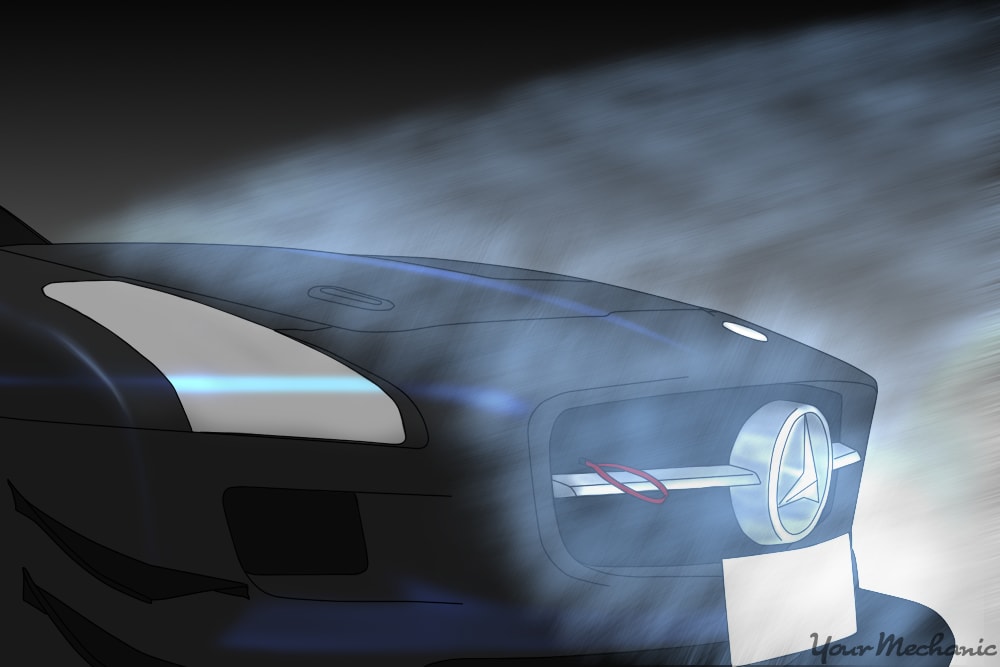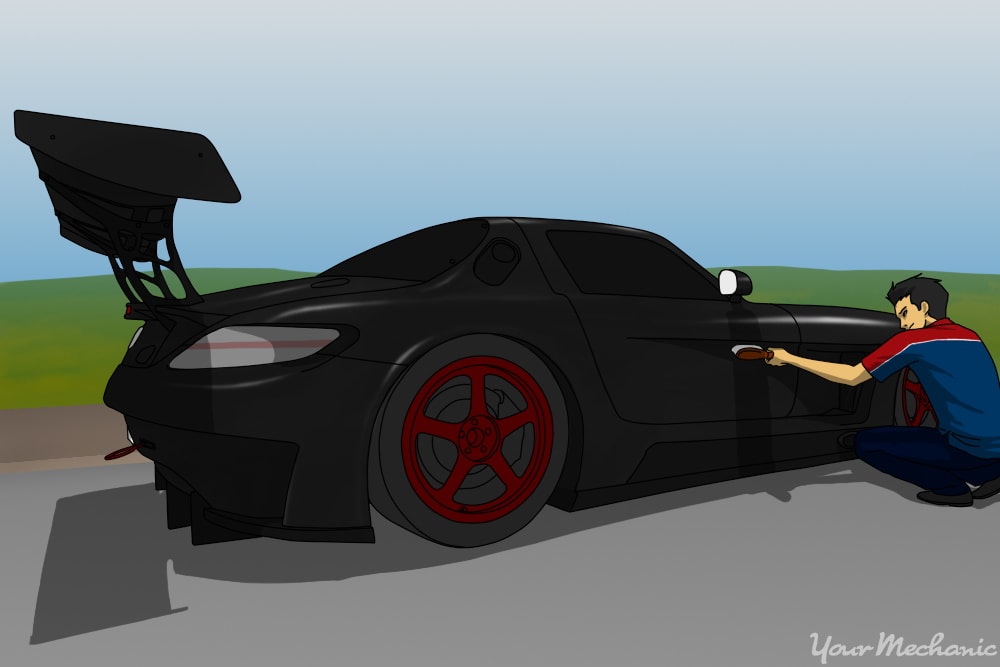

With drought affecting large areas of the country on a growing basis, it is more important than ever to conserve water. This includes saving water while performing everyday tasks such as washing your vehicle. Whether you want to use less water, or no water at all, you can save on your water consumption while still keeping your vehicle's exterior clean.
Method 1 of 2: Using no water
Materials Needed
- Bottle of waterless car wash cleaner
- Microfiber towels
One great way to wash your vehicle that uses no water at all involves using a waterless car wash cleaner. This allows you to keep your vehicle's outer surface clean while conserving water.
Step 1: Mist the body of the car. Using the waterless car wash cleaner, mist the body of the car one section at a time.
Make sure to start at the vehicle's roof and work your way down.
- Tip: Another option is to spray a little of the cleaning solution directly onto the microfiber towel when trying to get to hard-to-reach areas. This might work great along the bottom edge of the vehicle and the grille.
Step 2: Wipe each section. Wipe down each section with a microfiber towel after you spray it with the cleaner.
The ridges of the microfiber towel should lift the dirt and grime away from the body of the vehicle. Make sure to switch to a clean section of towel as the section you are currently using gets dirty to prevent scratching the paint on your car.
Step 3: Remove any remaining debris. Finish by wiping the car down with a microfiber towel to remove any remaining dirt or moisture.
Remember to fold the towel to a clean section as it gets dirty to prevent the debris on it from making any scratches.
Method 2 of 2: Using less water
Materials Needed
- Car washing sponge (or mitt)
- Detergent
- Large bucket
- Microfiber towels
- Small bucket
- Soft-bristled brush
- Watering can
While one of the best ways to wash your car means using plenty of water to make sure you get your vehicle clean, another option is to just use less water. With this method, you avoid spraying water on your vehicle with a hose and use a bucket of water to wash your vehicle down instead.
- Tip: If you decide to use a car wash, look for stations that recycle their water or to look for a car wash type that uses less water. For the most part, conveyor-type car washes use more water than a self-service car wash where you wash your vehicle yourself.
Step 1: Fill a large bucket. Start by filling the large bucket with clean water.
Fill the small bucket from the water in the large bucket.
Step 2: Soak your sponge. Soak your sponge in the smaller bucket.
Make sure not to add any detergent to the water at this stage in the process.
Step 3: Wipe down the vehicle. Once thoroughly soaked, use the sponge to wipe down the surface of the vehicle, starting at the roof and working your way down.
This helps remove any dust while also wetting more difficult debris, loosening its hold on the vehicle's surface and making it easier to remove later.
Step 4: Rinse the vehicle off. Using the remaining water in the large bucket, take the smaller bucket and use it to rinse the vehicle off.
Step 5: Refill the large bucket with water.
- Tip: Move quickly while washing your car in this manner. By moving quickly, you do not give the water on the vehicle's surface time to dry completely, meaning you have to use less water in the washing process.
Step 6: Add 1 or 2 teaspoons of detergent to the small bucket. This should provide enough soap to wash the vehicle without it becoming too soapy.
Step 7: Fill up the smaller bucket. Add water to the smaller bucket from the large bucket of water.
Step 8: Wash the vehicle’s surface. Using a sponge and the soapy water in the smaller bucket, start at the roof and wash the vehicle surface, working your way down in the process.
The point at this stage is to get the detergent onto the body of the vehicle so that it can work on the dirt even more.
Step 9: Scrub any tough spots. Starting from the top, work your way down the outside of the vehicle, scrubbing more stubborn areas as you go.
If needed, use a soft-bristled brush to loosen up hard-to-remove dirt and stains. Using the remaining water in the large bucket, continue to add it to the smaller bucket as you really start to work on the vehicle's surface.
Step 10: Rinse the sponge. Once you are finished washing the vehicle, rinse the sponge and set it aside.
Step 11: Rinse the vehicle. Pour any remaining water in a watering can and rinse the soap and grime from the vehicle's surface.
Step 12: Wipe away any remaining spots. Clear up any soap trails with the sponge and give the vehicle a final rinse from the top down.
You can also pour water from the larger bucket into the smaller bucket, rinse the sponge in the smaller bucket, and use that water to clean and rinse the wheel hubs.
Step 13: Dry the vehicle. Dry the surface of the vehicle with a microfiber cloth.
Wax if desired.
Keeping the outside of your vehicle clean can help preserve the paint and prevent the buildup of oxidation, which can lead to rust on older models. If you do not feel confident in washing the vehicle yourself, consider taking it to a professional car wash, making sure they are environmentally friendly beforehand. If you have any questions about the process or about the recommended frequency of a car wash, Ask a Mechanic for some quick and helpful advice.





